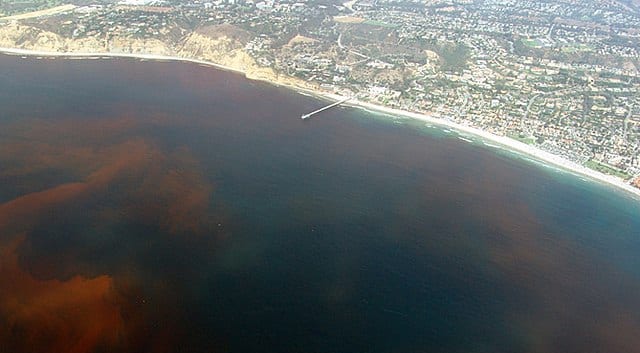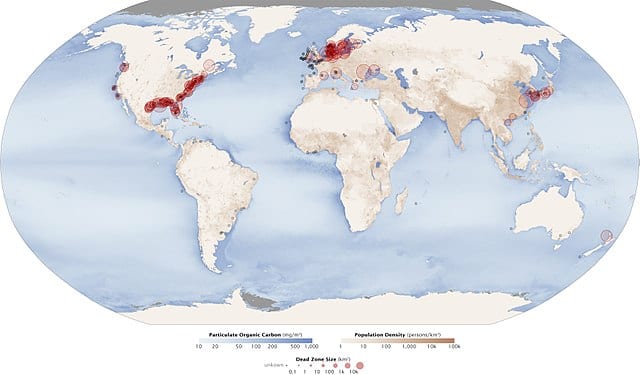Continuing from my previous post, I want to talk about real life examples of climate change and its effects on the world around us. The idea for this particular post came to me when I was scrolling through Facebook and saw a video about a dead zone near the coast of Oman. It made me really happy that climate change issues have become ‘popular' enough that they are being discussed on social media. Whatever someone's views may be, the fact that they are talking about it so openly is a step in the right direction.
It also made me really curious: what is a dead zone?

According to the EPA, a dead zone is an area of a water body where aquatic life cannot survive due to low oxygen levels. Such conditions, known as ‘hypoxic' conditions, are caused by a phenomena called eutrophication. This is a process in which an increased amount of chemical nutrients in the water leads to an algal bloom, which depletes the water body of oxygen to create a dead zone.
We need to have some understanding of what algal blooms are: nitrogenous leeching in coastal areas, and phosphate leeching in freshwater lakes, which lead to excessive algal growth in short periods of time. Cyanobacteria or blue-green algae can release toxins into the water making it unsafe for marine life and humans as well. In addition, nitrogen oxides released from the burning of fossil fuels also play a part in creating dead zones.
In case you haven't realized, this is a major issue. Just imagine the huge swathes of the world's oceans that are now lifeless. The dead zone in the Gulf of Mexico off the Mississippi basin, for example, is about 8,500 square miles. To put this in perspective, that is about the size of the state of New Jersey! The amount of damage caused to our ecosystem globally is very hard to imagine. Not only that, recent models suggest just to offset the effects of predicted precipitation in the Mississippi basin during the 21st century would require a 30% decrease in nitrogen inputs. In other words, just to prevent this one dead zone from getting bigger, we would have to cut down nitrogen use by 30% in the farms surrounding the Mississippi river and its tributaries.

Thankfully, the reversal of a dead zone in the Baltic Sea shows us that this problem can be solved. After the fall of the Soviet Union, discharge of chemical waste decreased dramatically, leading to the return of wildlife and partial restoration of the ecosystem in the dead zone. Similar efforts are underway in Denmark and Germany; in fact, Denmark has halved its nitrogenous waste just by reforming its agricultural practices. There are many possible reforms that can help us continue in this vein. Better treatment of sewage waste (by converting nitrogen oxides into urea), reduction in the use of fertilizer, and lab grown meat could all, in theory, help us tackle this problem.
I hope this article drives home the point that the proliferation of dead zones globally is a major issue that we as a society need to work towards tackling. At the same time, it is probably one of the easier problems to tackle, since scientists are quickly coming up with solutions. All we really need right now is for society as a whole to realize the urgency of the problem, and be willing to implement the proposed solutions.
About the author:
 |
Zaka Asif is a first year doctoral student rotation through different labs in the ILS program. When I am not working in my lab, I can be found driving around, watching/playing soccer or cricket, playing pool, cooking or just lazying around in bed. More from Zaka Asif. |
About the Author
- athenssciencecafehttps://athensscienceobserver.com/author/athenssciencecafe/April 17, 2020
- athenssciencecafehttps://athensscienceobserver.com/author/athenssciencecafe/April 12, 2020
- athenssciencecafehttps://athensscienceobserver.com/author/athenssciencecafe/April 3, 2020
- athenssciencecafehttps://athensscienceobserver.com/author/athenssciencecafe/March 30, 2020







